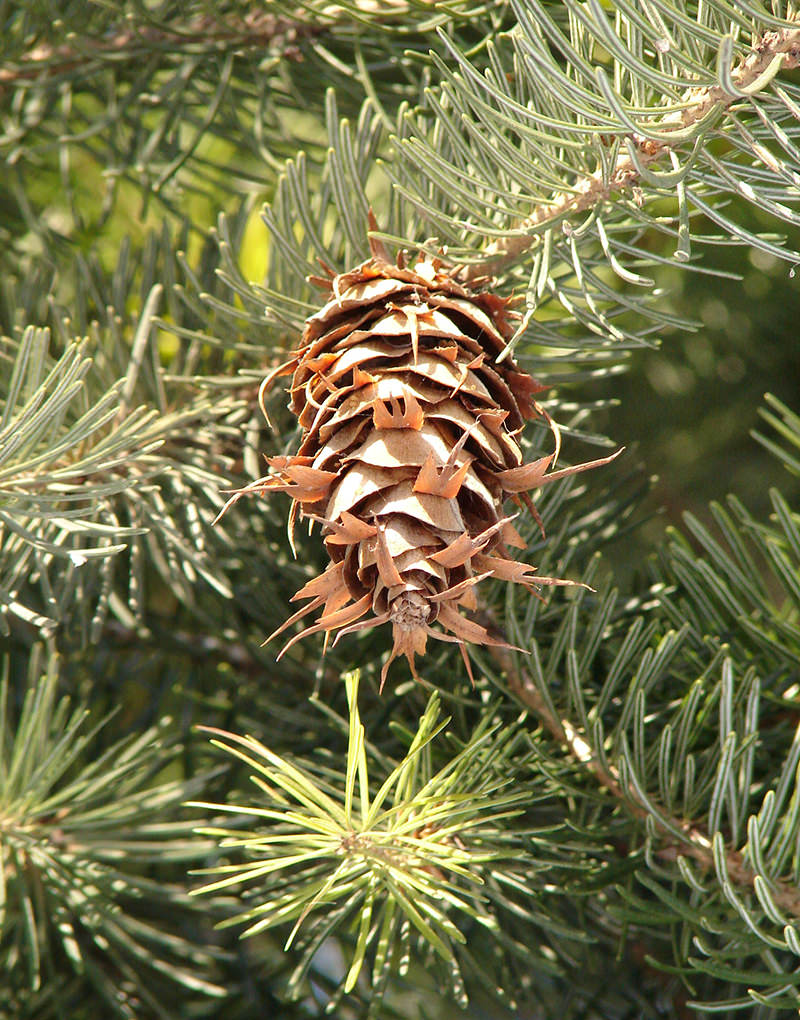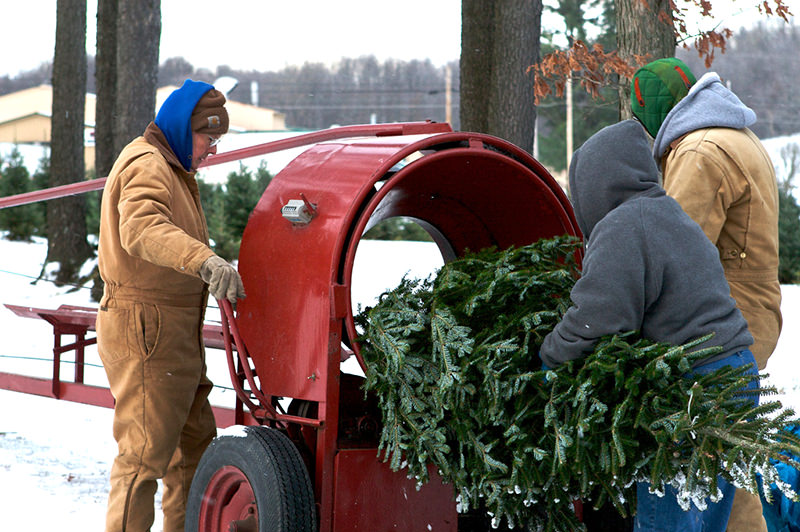
There’s something to be said about the attention that’s paid to planting and caring for neat rows of pine trees, spruce trees and fir trees. Christmas tree production is a relatively low-maintenance farm enterprise that can provide income in the winter season, when vegetable crops have subsided in much of the country.
While a Christmas tree farm does require year-round work, on a small scale, they can be managed with part-time labor until harvest time and still yield a few hundred dollars per acre in profit. The Oklahoma Christmas Tree Association recommends that hobby-scale Christmas tree farmers plan to maintain no more than 2,000 trees per year to have a manageable work load, whereas full-time Christmas tree farmers may plant 5,000 to 10,000 trees per year.
A Holiday Icon
There are close to 15,000 farms growing Christmas trees in the U.S. and more than 100,000 people employed in the industry, so you’ve got a lot a competition ahead of you. The top producing states include California, Oregon, Michigan, Washington, Wisconsin, Pennsylvania and North Carolina. Colorado has the most Certified Organic Christmas tree acreage in the U.S., with only 27 acres—so that would be an interesting and potentially profitable niche to consider!
When it comes to selling Christmas trees you have two main options: pre-cut and cut-your own. About 78 percent of Christmas trees sold in the U.S. are pre-cut trees and 22 percent cut-your-own.
History Of The Christmas Tree Tradition
While putting evergreen trees in a home during the winter season is considered a Christian tradition, this practice started before the advent of Christianity. It was believed that evergreens would keep away witches, ghosts, evil spirits and illness. The first decorated Christmas tree was in Riga, Latvia, in 1510, and have only been sold commercially in the United States since about 1850. In 1882, came the advent of electric lights, when Thomas Edison’s laboratory assistants introduced a tree boasting 80 bulbs.
Growing Christmas Trees

To get started growing Christmas trees, you need to invest in some equipment, including a mower, a tractor with an auger (or some other means of planting saplings), pruning shears and shearing knives. Pine trees, spruce trees and fir trees can all be grown from seed, but you’re more likely to have success by purchasing seedlings.
Plant seedlings in a grid pattern, at least 5 feet apart, so they get equal amounts of sunlight, water and nutrients and have the best chance of growing evenly on all sides. Set your tree spacing based on the width of your mower, so you can work within your fields efficiently. When you plant the saplings, it will look like your Christmas tree field is barren, but soon they will grow and you will have little room to work between them.
Young trees will thrive with regular watering. A drip-irrigation system is the wisest choice here. Well-drained soils are a must, because trees do not like wet roots. Oregon State University Extension Service recommends having a water table no closer than 24 inches from the soil surface.
How Long Do Evergreens Take To Grow?
You’ll have to figure your time to harvest based on your climate and the tree variety you plant. An optimal Christmas tree height is 5 to 8 feet, and most evergreens are ready to harvest in five to eight years. This is a long time to invest in and tend to a crop without receiving income from it, so keep that in mind before you begin planting. Starting in the second year, prune trees annually into the iconic cone shape using a machete or shearing knife.
Pests, Diseases and Weeds
Like with any crop, you’ll need to tend to these issues on a Christmas tree farm. Weed control is critical during the first two years to reduce competition for available moisture, nutrients and sunlight. You might not think of weeds as a problem for grown Christmas trees, but when the trees are small saplings, weeds can easily grow taller than they are.
Insect pests cause damage, as well, putting a damper on your long-term time investment. Be on the lookout for gall midges, balsam twig aphids, bagworms, various scales, eriophyid mites and white pine weevils. Different evergreen varieties act as hosts to these pests, and some pests are more common in certain areas of the country than others. Your cooperative extension can help you identify and treat pests that commonly affect Christmas tree production.
In terms of diseases, watch out for Armillaria root rot, balsam fir needle rust, charcoal rot, gall rust and Lophodermium needle cast. Again, not all pines, spruces and firs are susceptible to all fungal and bacterial diseases, so reach out to your cooperative extension for help with identification and control.
Harvesting Trees

While growing Christmas trees requires relatively basic equipment, you’ll need a bit more when it comes time to harvest:
- chain saw and handsaws (of course)
- a tree digger (if you plan to sell live balled and burlapped trees)
- a tree shaker to shake off the excess needles
- a netter to wrap up the tree in twine for shipping
- a truck or trailer to haul the trees
- facilities on your property if you plan to sell them from the farm or as cut-your-own Christmas trees
Trees’ readiness for harvest is dictated by their size and shape rather than their age. You may have a market for smaller trees, or you may have to wait until your trees are 5 feet or taller. Harvesting trees, which are often taller and heavier than the farmer, pose different workplace hazards than, say, bending over to harvest beans or zucchini. Consult the North Carolina Cooperative Extension’s comprehensive guide about how to safely and ergonomically harvest Christmas trees so you can protect yourself.
Top Christmas Tree Varieties

There are more than 600 conifer tree species in the world, yet Americans know only a few as Christmas trees. To find success as a Christmas tree farmer, consider growing one or more of these species:
- White Pine: The largest pine in the U.S., the white pine has soft, flexible needles and a bluish-green color. It doesn’t have a strong pine scent and holds onto its needles pretty well, but it isn’t recommended for heavy ornaments. This fast-growing tree is native to the northern third of the U.S., extending as far south as the mountains in Georgia.
- Balsam Fir: With sturdy, dark-green needles and a classic Christmas tree scent, this fir tree is an excellent choice for eastern farmers growing from Virginia northward.
- Douglas Fir: This Christmas tree tends to be a best-seller. It has soft, dark-green to blue-green needles that radiate in all directions from the branch and give a sweet fragrance when crushed. This fir tree is known as Oregon’s state tree and is the primary Christmas tree variety grown in the Pacific Northwest.
- Scotch Pine: which holds on to its bright-green needles even when dry. This pine tree species does very well in acidic soil in all climates.
- Leyland Cypress: A tree meant for alkaline soils. This is the most popular Christmas tree in the Southeast U.S., according to the National Christmas Tree Association. It has a dark green-gray color and very little aroma. It isn’t in the pine tree or fir tree family, so it doesn’t produce sap.
- Virginia Pine: Another popular southern Christmas tree species, its branches are compact and stout, and in nature, the trees are a nesting site for woodpeckers.
- Fraser Fir: This tree has a very small growing range of elevations above 4,500 feet in the Southern Appalachian Mountains. The branches turn slightly upward and have good retention of their dark blue-green needles. They hold up well to shipping and have a classic Christmas-tree scent.
Markets For Christmas Trees

Christmas tree production costs $5 to $10 per tree from establishment through harvest, but can yield annual returns per acre between $600 to $1000, according to the Oregon State University Extension Service. You have options of how you want to sell your trees: directly from your farm as already-cut or cut-your-own trees, through a farmers market or similar local retail setups, or to a distributor or wholesaler.
Other Uses For Evergreens
You also should overlook the uses for your evergreens that go beyond Christmas trees. Florists and decorators are in need of boughs year-round, but particularly during the winter. Additionally, live trees can be sold to landscapers and homeowners. There is also demand for lumber from some pine trees.
Environmental Effect Of Christmas Tree Farms
You can view the environmental effect of Christmas tree farms from a positive or negative angle. Christmas tree farms preserve open land by offering an income source for farmers and landowners. Planting hundreds of trees increases the amount of living matter that’s taking in carbon dioxide and other gasses and emitting oxygen; plus, they’re an alternative to artificial trees, which are made of petroleum-based plastics. Unlike the fake versions, which can sit in landfills for decades once deemed unusable, live Christmas trees can be used as mulch and compost materials after their decorative lives are through.
By growing Christmas trees locally and on a small scale, you cut down on the tons of petroleum products needed to ship non-local trees thousands of miles to consumers. While some tree farms may spray chemical pesticides and herbicides to ward off pests, disease and weeds, you can implement more organic controls on your farm.
Green Tips For Your Christmas Tree

As you invite customers to come onto your farm to select the centerpiece for their homes during the holidays, it’s up to you to educate them on how to find environmentally friendly Christmas trees and dispose of them properly end of the season. Post tips around your farm store or hand out info sheets with these ideas to get your customers thinking:
- Purchase a Christmas tree that’s locally grown. If possible, buy a live, balled and burlapped tree to plant outside when you’re finished with it.
- Look for organic Christmas trees (these are very hard to find), or ask the Christmas tree farmer about the chemicals used in the tree’s production.
- If you do not go with a balled and burlapped tree, chip and compost your Christmas tree or use it as mulch. Christmas trees need to be well composted at high heat if they were treated with herbicides, otherwise the herbicides could still be active and damage your garden plants.
- If you have use for more mulch or compost, collect Christmas trees from neighbors and friends to prevent all of their trees from going to the landfill.
- Don’t burn Christmas trees in your fireplace or wood stove, as their sap releases creosote that can build up on chimney walls and ignite.
If you’re thinking about starting your own Christmas tree farm, find your state association of Christmas tree growers and use their resources. Every region and market has different things to know, and people who’ve been doing this for a while can help you learn about best practices in production.




